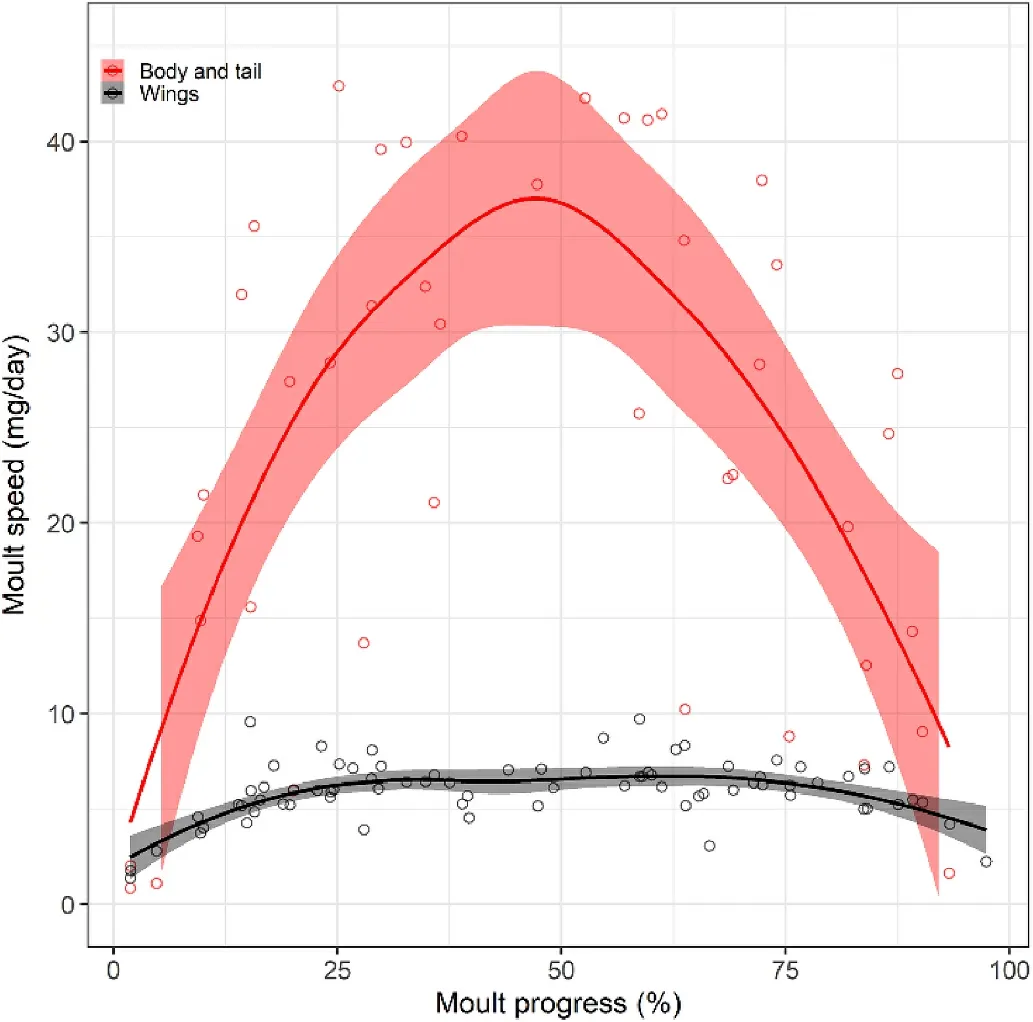Corrigendum to “Moult intensity constraints along the complete moult sequence of the House Sparrow (Passer domesticus)” [Avian Res.14(2023) 100125]
2024-01-22SantiGuallarJavierQuesada
Santi Guallar, Javier Quesada
Departament de Vertebrats,Museu de Ci`encies Naturals de Barcelona,Barcelona,08003,Catalonia,Spain
In the original version of this article, we published a figure showing a gap in the confidence intervals for body and tail due to data paucity for mid stages of moult progress.Here, we amended this problem adding data from the 2023 moulting season, during which we obtained 139 moult records from 98 individuals.The final sample size used for plotting these results are shown in the caption below.This amendment corroborates the conclusion already stated: body moult does not seem to be under physiological constraints, although primary moult appears to be tightly controlled to reduce aerodynamic losses.

Fig.8.Moult speed in the House Sparrow, calculated as the average mass gain during the elapsed time between capture and recaptures.Local polynomial regression on moult progress calculated as the mean moult progress between consecutive captures (shaded ribbons depict 95% confidence intervals).Mass gain of primaries and rectrices have been calculated from one wing and tail side, respectively, and then multiplied by 2, i.e., assuming symmetry.Sample sizes for body and rectrices and primaries weren= 76 and 98 within-year recaptures from 56 to 40 individuals, respectively.
The authors would like to apologise for any inconvenience caused.
CRediT authorship contribution statement
Santi Guallar:Conceptualization, Data curation, Formal analysis,Investigation, Methodology, Software, Validation, Visualization,Writing – original draft, Writing – review & editing.Javier Quesada:Funding acquisition, Resources, Validation, Visualization, Writing –review & editing.
杂志排行
Avian Research的其它文章
- Selecting the best: Interspecific and age-related diet differences among sympatric steppe passerines
- Morphology and morphometry of two hybridizing buntings at their hybrid zone in northern Iran reveal intermediate and transgressive morphotypes
- Quiet in the nest: The nest environment attenuates song in a grassland songbird
- Characteristics of cross transmission of gut fungal pathogens between wintering Hooded Cranes and sympatric Domestic Geese
- Fecal DNA metabarcoding reveals the dietary composition of wintering Red-crowned Cranes (Grus japonensis)
- Short-term night lighting disrupts lipid and glucose metabolism in Zebra Finches: Implication for urban stopover birds
